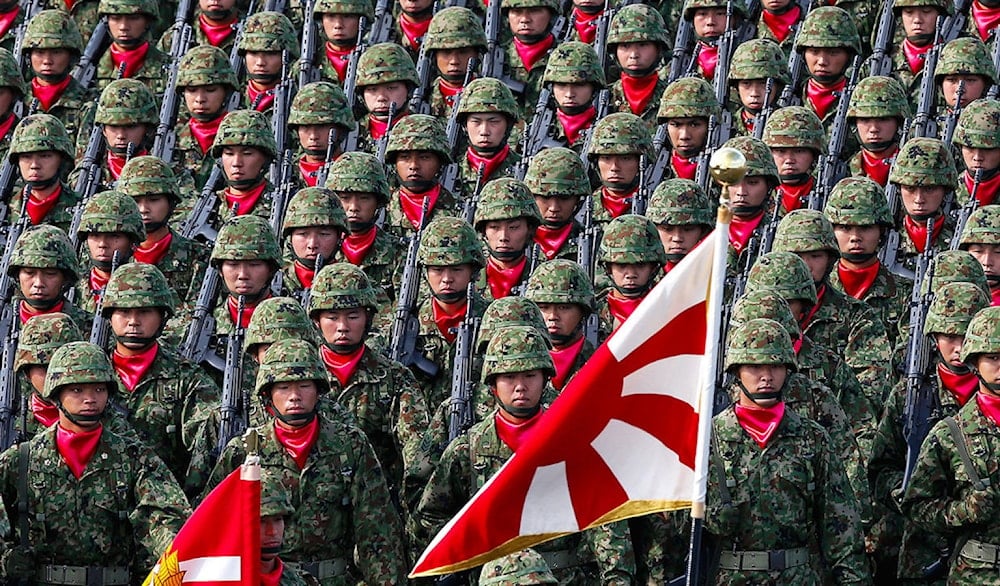Pacifism to readiness: Inside Japan’s shifting defense industry - FT
Japan’s defense industry is undergoing a historic shift from pacifism to realpolitik, FT columnist Leo Lewis states. highlighting the lack of battlefield medical readiness after decades without combat as a prime reason.
-

Japanese Special Defense Force troops in an undated photo (AFP)
At Japan's Defense and Security Equipment International (DSEI) trade show in Tokyo earlier this year, the host nation presented a striking departure from its postwar pacifist image. With 471 defense companies from 33 countries showcasing drones, armored vehicles, fighter jet models, and missile defense systems, Financial Times columnist Leo Lewis says the exhibition reflected a growing acceptance of realpolitik in Japanese security policy.
The event highlighted Japan’s rapid military modernization, which Lewis claims is fueled by concerns over regional instability and doubts about the long-term reliability of the US defense umbrella.
The FT columnist highlighted the "Sam" exhibit among the advanced weapons that promised deterrence and operational superiority. He noted that Sam is a lifelike mannequin depicting a gravely wounded soldier, designed to train military and civilian surgeons for battlefield trauma.
Created by trauma surgeon Professor Ian Pallister, Sam has been used since 2023 to prepare British military medics and civilian doctors for severe injuries from war or terrorism. Unlike traditional training with actors and makeup, Sam simulates continuous bleeding until the correct surgical procedures are applied.
Pallister warned that Japan’s decades without combat have created a deep “Walker dip,” the loss of battlefield medical expertise during prolonged peace. Most Japanese military surgeons have never treated war injuries, making medical readiness a critical gap in overall defense preparedness.
Read more: US-South Korea drills set for mid-August
Japan’s military spending surge
In 2023, Japan announced it would raise defense spending to 2% of GDP within five years, marking a historic break from its pacifist constitution’s spirit. The move, framed as a response to “the most severe and complex security environment of the postwar era,” reflects both rising regional tensions and a reassessment of national self-reliance.
Even before US President Donald Trump’s second presidency introduced new uncertainties into the US-Japan alliance, Tokyo’s defense white papers urged greater autonomy. Lewis states that the shift toward realpolitik acknowledges that Japan cannot assume its security will always be guaranteed by others.
A shift away from the US was shown to be favorable in public polls. In a poll published by Asahi Shimbun on April 27 of this year, 68% noted a preference for a foreign policy that is "as independent as possible."
While the Japanese military invests heavily in fighter jets, missile systems, and naval capabilities, mental readiness for the human costs of war lags behind. Sam’s grim realism confronts visitors with the consequences of combat that many in Japan’s defense and public sectors have never personally witnessed.
The mannequin underscores a broader challenge for the Japanese military: bridging the gap between material preparedness and societal readiness for conflict. Without this, even the most advanced arsenal may fall short in a real war.
China: Japan's militarism 'very dangerous'
China has previously voiced concern over Japan's increased defense spending. In 2022, Beijing stated that Tokyo's regional fears are inflated and that a boost in militarism would be "very dangerous," per Chinese Foreign Ministry spokesperson Wang Wenbin.
In May of this Year, China continued to warn of Japan's inflated regional fears, with Chinese experts stating that these fears are geared towards justifying an increased defense budget. The experts cautioned the international community to stay alert to Japan's intentions.
Read more: Japan marks 80 years since Hiroshima, calls for disarmament
NATO Secretary General Mark Rutte fueled these fears by telling Japanese media, "Let us not be naive about China [...] The build-up of their armed forces and investments in their defence industry, and in their defence capabilities, is staggering."

 4 Min Read
4 Min Read










